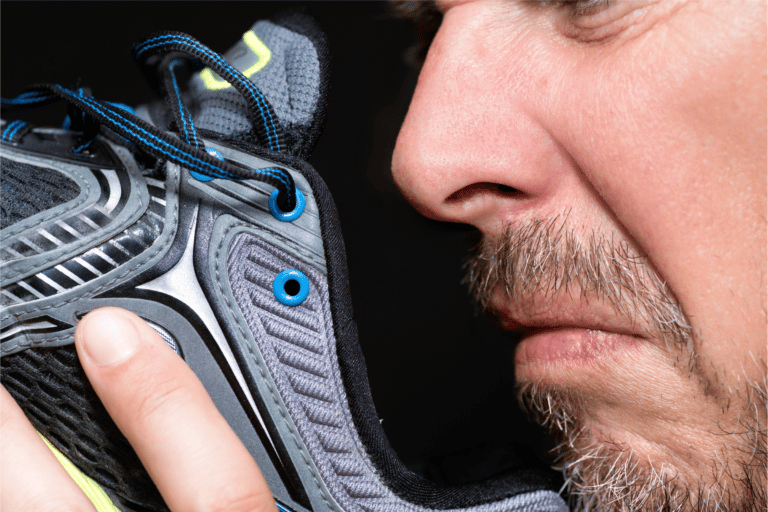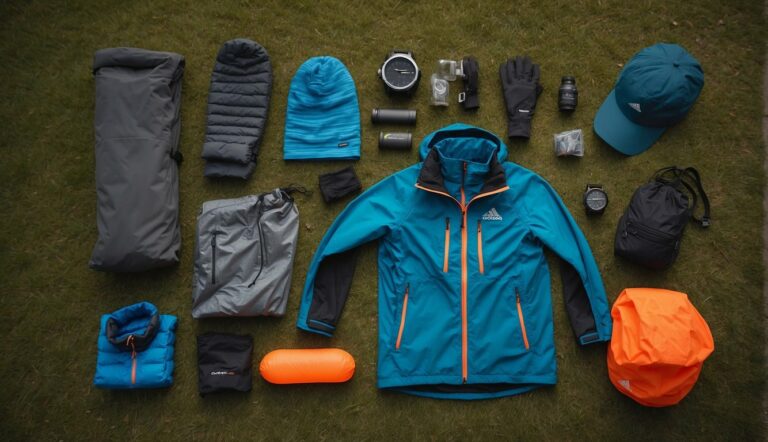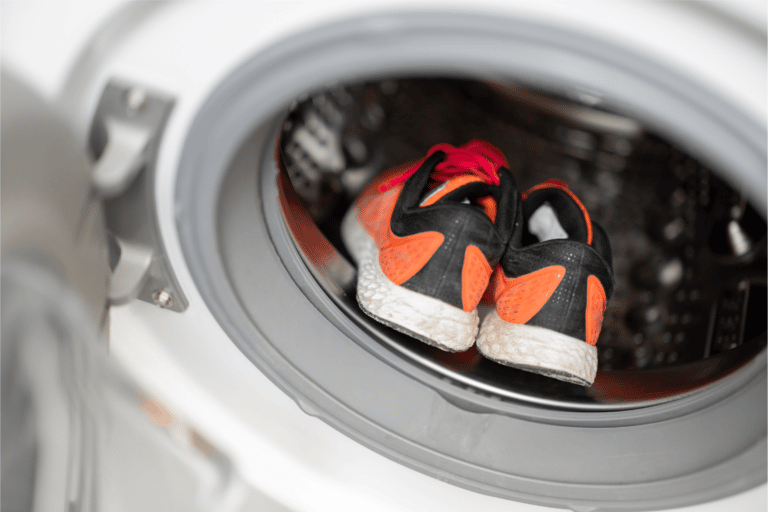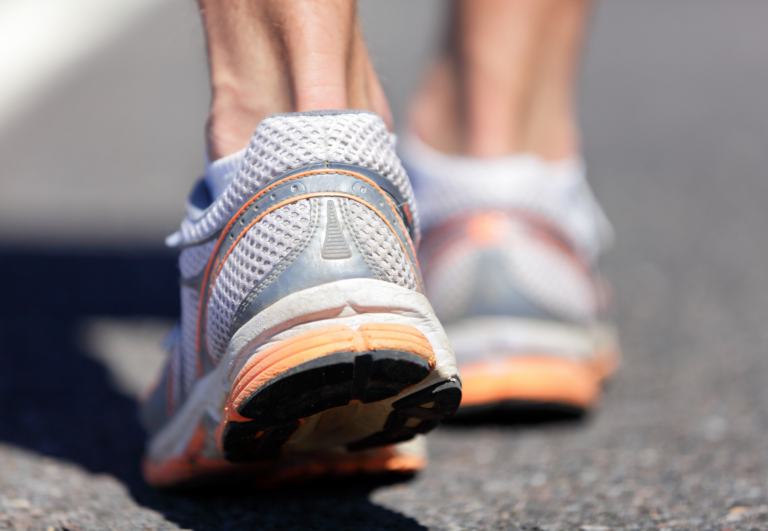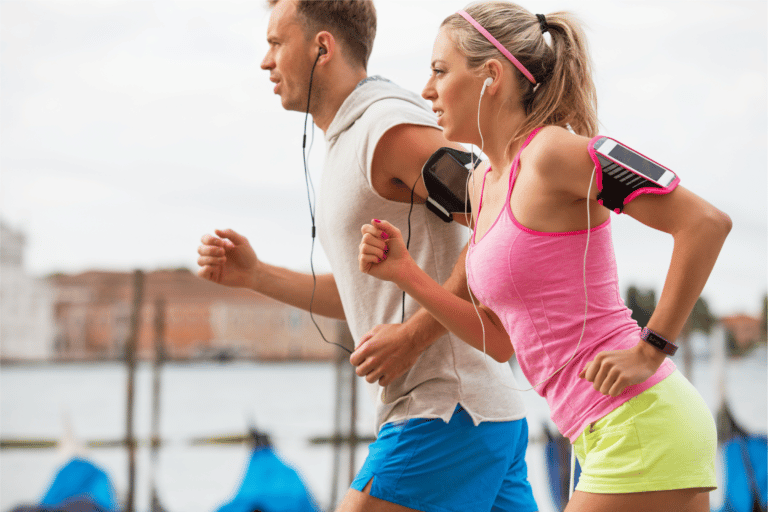Do Running Tights Stop Chafing (5 Ways To Prevent Chafing With Tights)
Working up a good sweat on a long run is one of the best parts of being a runner for me. Ending up with chafed thighs because of that sweat may be one of the worst. I’ve tried various remedies, but it got me wondering, “Do running tights stop chafing?”
The right pair of running tights can greatly reduce your chances of chafing, but not all running tights are equal. Choose a pair that is made of synthetic, moisture-wicking materials to reduce chafing from sweat buildup. You also want a pair that fits properly and has as few seams as possible – especially between your thighs – to reduce friction.
Keep reading to learn more about what causes chafing during your run and how the right pair of running tights can prevent this unpleasant injury.
Why does chafing occur while running?
Running is a great sport, I don’t think anyone here is going to argue with me about that. It’s also a surprisingly dangerous one considering it’s not a full-contact sport or even inherently competitive. Think about it: the high-impact nature of running can cause repetitive injury, you could be one of the 7,000 pedestrians involved in a motor vehicle collision every year, or you could suffer one of the more banal injuries, such as chafing.
Depending on the severity, you may consider chafing an inconvenience or, in some cases, a downright injury! No one wants to keep running when the chafing between their thighs gets to the bleeding, crusty stage.
The best way to prevent an injury is to know what causes it so that you can avoid that situation in the future. So what’s the perfect storm that leads to chafed thighs?
Chafing is caused by:
- Friction – If your skin rubs against itself too much, this can wear it down a bit and increase the friction level, resulting in chafing. This is particularly common with the thighs.
- Sweat – The sweat produced while running can make the chafing worse.
- Extra fabric – Loose clothing can end up increasing the amount of rubbing on your skin.
- Fabric not designed for running – Unsuitable material can produce more friction.
- Humidity – If the weather is too hot or damp, the friction levels and skin sensitivity might become more pronounced.
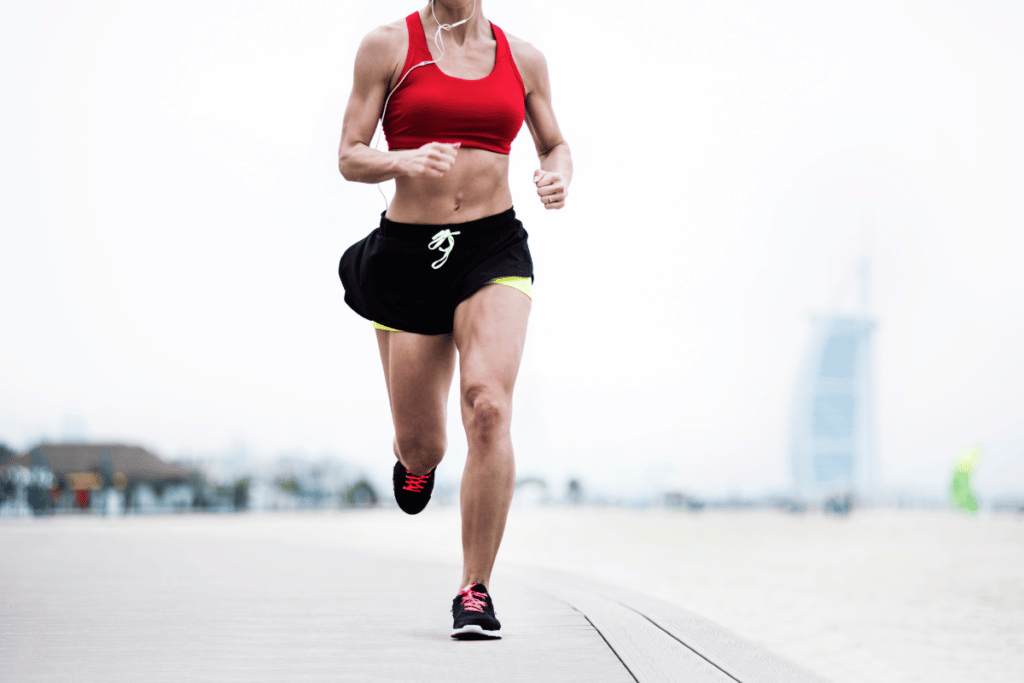
If you run regularly or for long distances, suitable running tights can make your runs easier and more comfortable.
How do running tights stop chafing?
Now that you know what exactly causes chafing, let’s talk about the best way to avoid that painful burn. If you’re one of the countless runners whose short seams make them want to scream, try using a pair of running tights. Running tights are a great option for friction reduction, especially in cooler months.
Running tights can help stop chafing due to:
- Reduced friction
- Sweat management
- Tight fit
- Flexibility
- Breathability
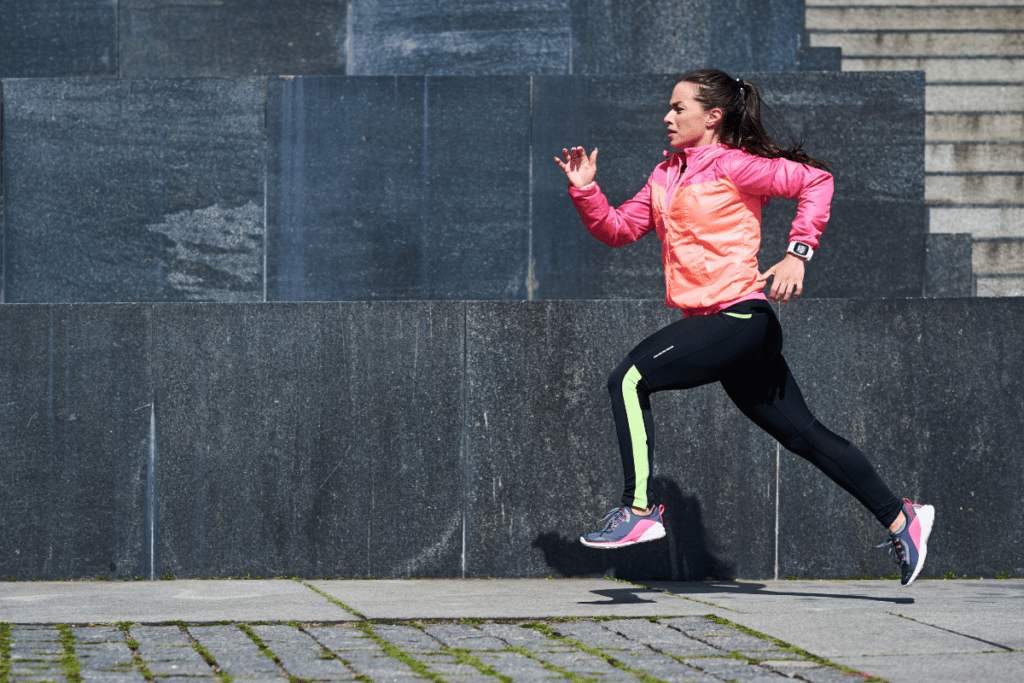
Let’s take a deeper look and see how each of these qualities helps stop chafing.
Reduced friction
If you’re prone to chafing or prefer not to use an anti-chafing stick, running tights might be your new best friend.
Proper running tights will create a barrier that keeps the skin of your inner thighs from rubbing together as you run. Since friction usually occurs due to skin-to-skin contact or through looser running garments (think baggy shorts or pants that are not designed for running) rubbing between your legs, tights can make your stride a smoother movement.
By adding a layer of fabric on your legs and preventing direct skin contact, you are bound to experience lesser friction. Your inner thighs are particularly sensitive and prone to chafing, so you must ensure that your running tights cover them well enough.
Sweat management
Running tights made from synthetic materials are excellent at helping you manage sweat.
Sweat is a major reason that results in chafing, especially when combined with friction. It can also result in much more burning, meaning longer-lasting pain.
Synthetic tights are typically developed to have sweat-wicking abilities. Although they cannot completely keep the sweat away, they can quickly wick away and remove the sweat from the material, thereby preventing prolonged contact with your skin.
Tight fit
Running tights are designed in a way that tends to hug your legs properly.
This tight fit is much better than wearing loose shorts or garments that might rub against your skin often, which is much likelier to happen while running or conducting some physical exercise.
You can keep your skin from chafing by ensuring that the fabric remains in position and does not move around too much. Even if the chafing takes place, it is bound to be minimal and not as intense as looser fits.
Flexibility
You will likely find you have more flexibility when wearing running tights than looser garments.
Even though the pants themselves are snug, they fit close enough that you are free enough to move around without any kind of interference from the fabric itself.
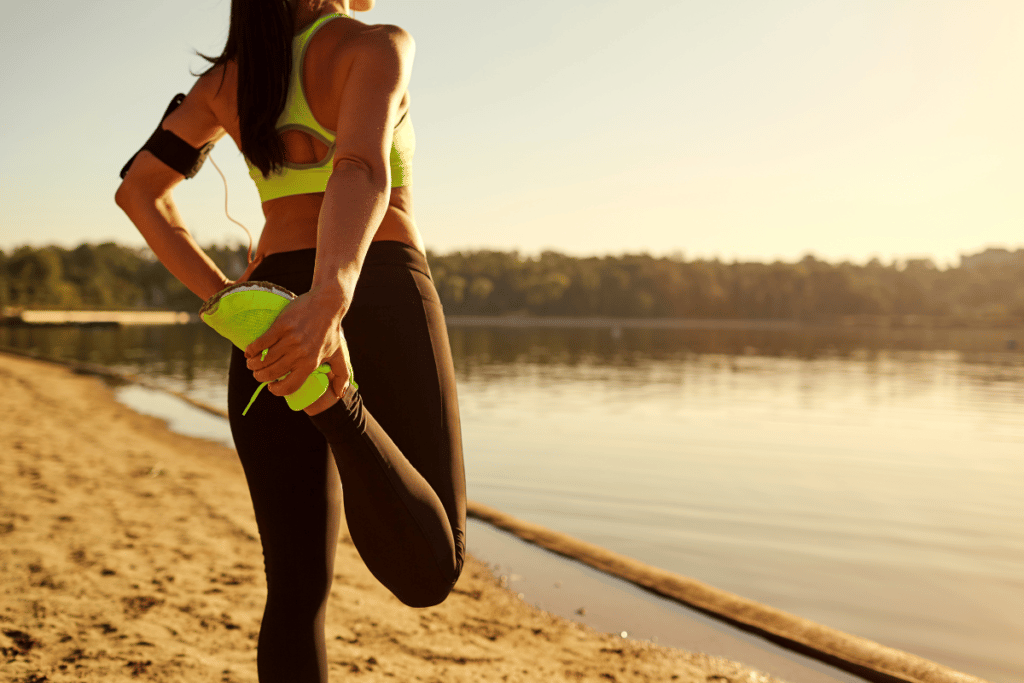
Additionally, there are some materials that provide a lot more flexibility as compared to others. Spandex and nylon, for instance, tend to have a good amount of stretch, thus resulting in improvements in how the fabric performs under intense movements. This can also prove to be useful for your workout or running session.
Breathability
Breathability refers to how much water and vapor are allowed to make their way through the fabric and is associated with the level of comfort the fabric offers.
For more breathable fabrics, the rate of drying and removing the vapor from the fabric tends to be much higher, meaning shorts made from these materials are more comfortable. Breathability can also ensure lightness and comfort.
Cotton is a good example of a breathable fabric. Unfortunately, it does not perform well based on the other requirements for reducing chafing, so you should save this natural fabric for other uses.
Do all running tights prevent chafing while running?
Not all running tights can stop chafing.
Keep the following factors in mind to figure out what types of running tights can work for you.
| Material | Synthetic materials like nylon and polyester are commonly used to make running tights and other athletic clothing due to their sweat resistance. Materials like cotton will not help due to the slow drying rate. |
| Seams | Ensuring that your running tights have fewer seams is important. Although seams are unavoidable, they should be small and not located along your inner thighs. |
| Length | Longer running tights that go up to your knees or just stop above them are more likely to stop chafing since they can keep the skin on your thighs from making direct contact. Shorter lengths might not work, and even longer tights might be a bit restrictive. |
Want to know the difference between running shorts and compression tights? Find out in this article!
Other Ways to Prevent Chafing
Looking for some additional ways to help prevent that dash rash from occurring in the first place? The following list has a couple more strategies for nipping this pernicious malady in the bud! Check out this list below:
- Use lube on affected areas
- Don’t ever shave in high-friction areas before a run
- Use nipple covers
- Wear moisture-wicking shirts and/or tights.
Pro tips to soothe chafing
Unfortunately, it’s possible to suffer painful chafing even when using precautions. Check out the list below for our runner’s rash treatment tips.
In case you have already irritated your skin, soothe chafing by:
- Taking a warm shower or bath. Hot water will only dry out the skin further.
- Cleaning the affected area with mild soap. Ensure that the soap has antimicrobial properties to prevent infections.
- Lightly patting the skin dry. Don’t rub.
- Applying a soothing antimicrobial lotion or gel on the chafed part of your skin.
- Keeping your skin moisturized and hydrated to prevent chafing again.
Once the irritation has healed, you can get back to your regular runs – in running tights this time!
How to stop bum chafing when running
Many of the strategies above also apply to bum chafing. To stop bum chafing when running, try applying baby powder before a run, wear tights that wick moisture, apply lubricant, and always make sure you’ve showered and cleaned your bum before going on a run.
How to prevent thigh chafing
Thigh chafing is not dissimilar from other forms of chafing already covered in this article. To prevent thigh chafing when running, wear seamless, moisture-wicking running tights, apply lubricant to your inner thighs, avoid shaving your inner thighs before a run, and try not to run wearing dirty undergarments.
Where can I get anti-chafing running shorts and leggings?
While no pair of shorts or leggings/tights is guaranteed to prevent chafing, usually, it’s best to get products that are seamless and made from synthetic, moisture-wicking materials. Many of the top-running brands make such products. Check out brands like Nike, Addidas, Under Armour, and Reebok.

